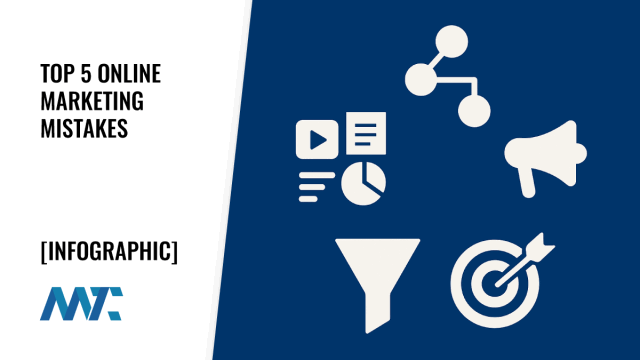Marketers have more data, more channels, and more tools than ever before; yet, many still fall into critical traps that prevent campaigns from reaching their full potential. The landscape has undergone a fundamental shift over the past decade—organic reach is in steep decline, AI-generated content is raising audience expectations, and customer journeys are becoming increasingly complex and non-linear.
Below are the top five online marketing mistakes I believe most businesses are making today, along with explanations of why each area deserves urgent attention, and what marketers can do to stay competitive.
Table of Contents
Attribution GapsFailing To Target The Full Customer JourneyIgnoring Paid Channels as Organic DeclinesDeploying Limited Content FormatsLacking A Clear Path to ConversionTakeaways
Attribution Gaps
One of the most common and costly mistakes marketers continue to make is failing to implement comprehensive attribution. Many brands still rely on outdated last-click attribution models, which significantly understate the influence of upper-funnel channels, such as video, display, and social media.
Accurate attribution allows marketers to see which touchpoints along the customer journey are driving conversions and revenue. Without this insight, especially in an omnichannel world where online and offline activities are blurring, budgets are often misallocated to channels that look good on paper but underperform in reality.
Modern multi-touch attribution—supported by tools like Google Analytics data-driven attribution or third-party (3P) platforms—provides a clearer, more realistic picture of what influences customer decisions. This has become essential, as buying journeys now often span numerous channels and devices.
Failing To Target The Full Customer Journey
Many online campaigns still target only the bottom of the funnel—chasing immediate conversions from ready-to-buy audiences—while ignoring earlier stages of the journey, such as awareness, consideration, and nurturing.
This approach leaves brands vulnerable to competitors who are building relationships earlier in the process. Buyers now conduct extensive research before engaging with sales, often across multiple content types and channels. Targeting the whole funnel helps brands stay top of mind, build trust, and increase conversion rates later on.
Additionally, AI-driven personalization tools now make it easier to deliver the right message at each stage of the journey—if marketers take advantage of them.
Ignoring Paid Channels as Organic Declines
Organic reach on social platforms and even organic search is a fraction of what it was five years ago. Algorithms prioritize paid placements, and AI-generated content has saturated organic channels with more noise than ever before.
Yet some businesses still invest the bulk of their time and effort into organic-only strategies—hoping to go viral or rank organically without the support of paid amplification. This is a mistake.
Paid media is no longer optional if you want consistent results. It enables precise audience targeting, ensures visibility in crowded feeds, and provides reliable performance data. The most successful brands today strike a balance between their organic content and innovative paid strategies to maximize reach and impact.
Deploying Limited Content Formats
Relying on a single content type—such as only blog posts or only social graphics—limits a brand’s ability to connect with audiences. Buyers now expect to engage with a variety of media depending on their preferences and where they are in the buying journey.
High-performing marketers now deploy a rich content mix: short-form videos (especially on platforms like TikTok and Instagram), long-form videos for YouTube and LinkedIn, webinars for lead nurturing, live video for engagement, in-depth case studies and whitepapers for consideration-stage prospects, podcasting to explain issues in detail, and interactive content where appropriate.
Diversifying formats enables meeting audiences where they are, increasing engagement, and accommodating diverse learning styles and decision-making behaviors. It also supports multi-touch attribution and journey-based targeting.
With the advent of GenAI tools, all of these are within reach of the average business.
Lacking A Clear Path to Conversion
Even when marketers succeed in attracting an audience and driving engagement, many fail at the final—and most important—stage: providing prospects with a clear and frictionless path to conversion.
Too often, campaigns focus solely on content consumption without providing clear next steps. Or they rely on a single conversion method, such as submitting a form, that does not suit every buyer.
Marketers need to provide multiple clear pathways: easy phone scheduling for those who want human contact, self-service options for those who prefer to move independently, live chat for quick questions, and book-a-meeting flows that integrate with calendars.
Removing friction at this stage not only increases conversions but also improves customer satisfaction and loyalty. AI-powered conversational tools can further enhance these pathways by personalizing the experience in real time.
Takeaways
Implement multi-touch attribution: Understand the full customer journey and reallocate budgets to the channels that drive results.
Target every stage of the funnel: Build relationships early with awareness and consideration content, not just bottom-funnel conversion ads.
Invest in paid media: Overcome the steep decline of organic reach with smart paid amplification strategies.
Diversify your content formats: Engage audiences across short videos, long videos, webinars, live sessions, whitepapers, and case studies.
Offer multiple conversion paths: Make it easy for buyers to take action in ways that match their preferences, reducing friction and boosting conversion rates.
©2025 DK New Media, LLC, All rights reserved | Disclosure
Originally Published on Martech Zone: Observation: Top 5 Online Marketing Mistakes in 2025

